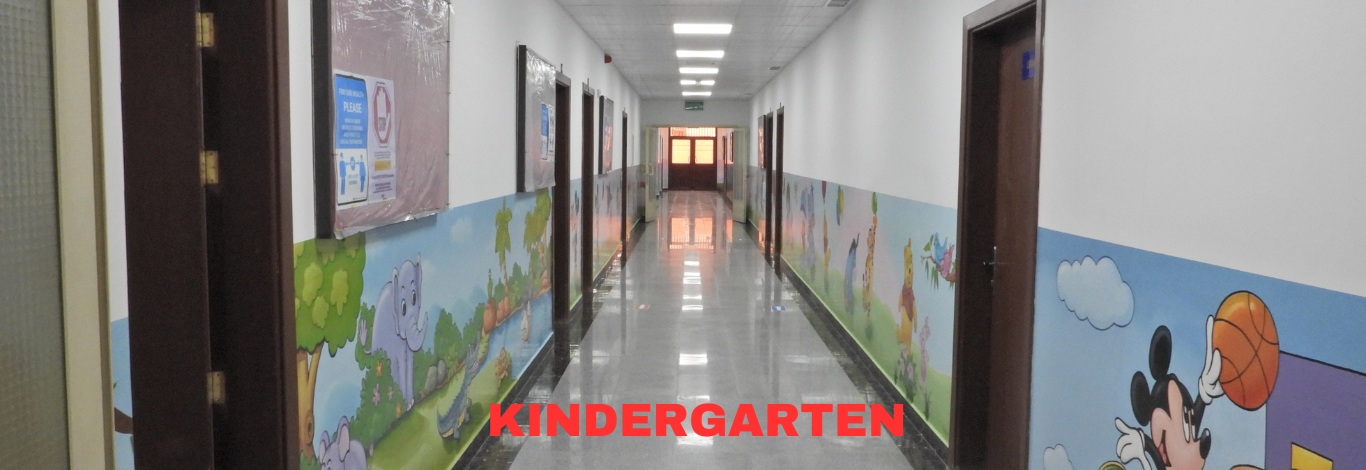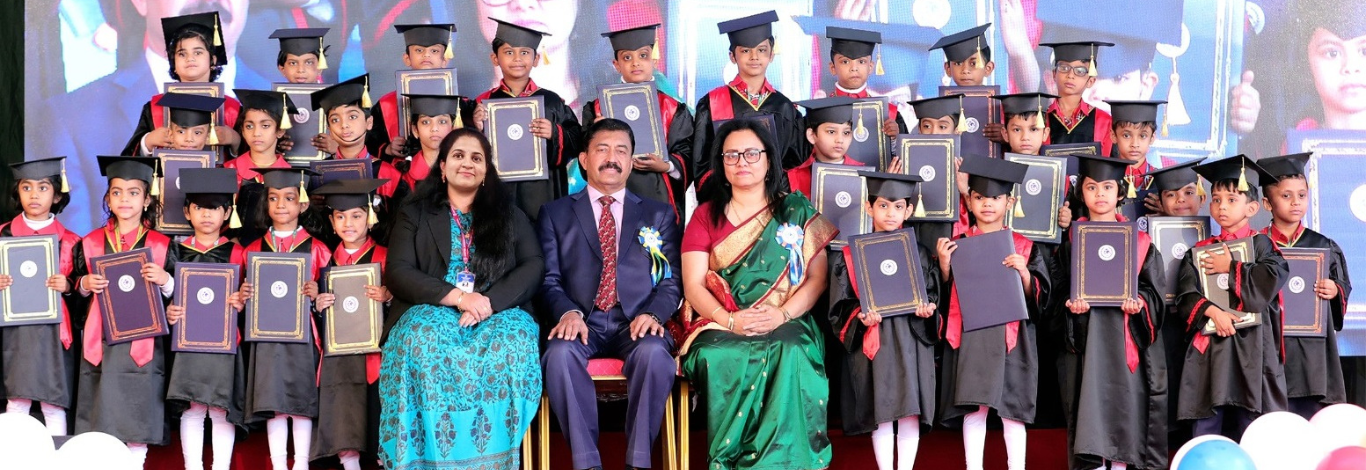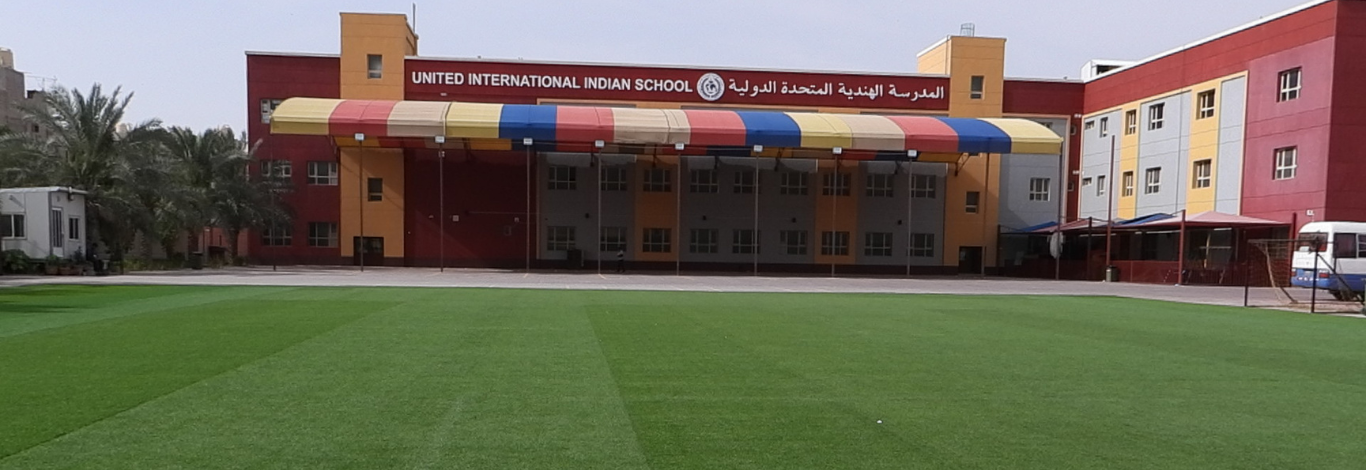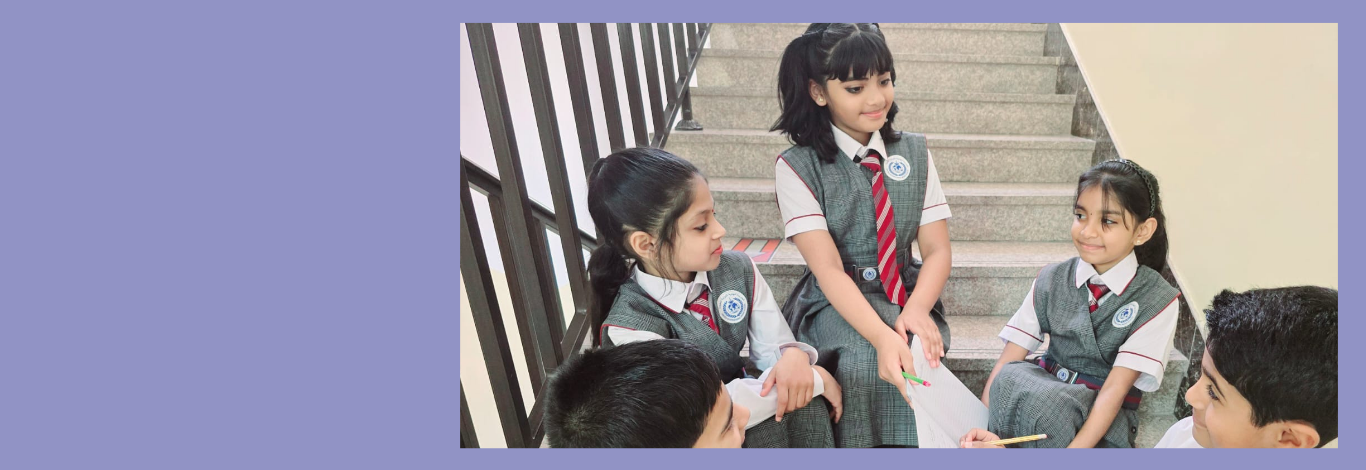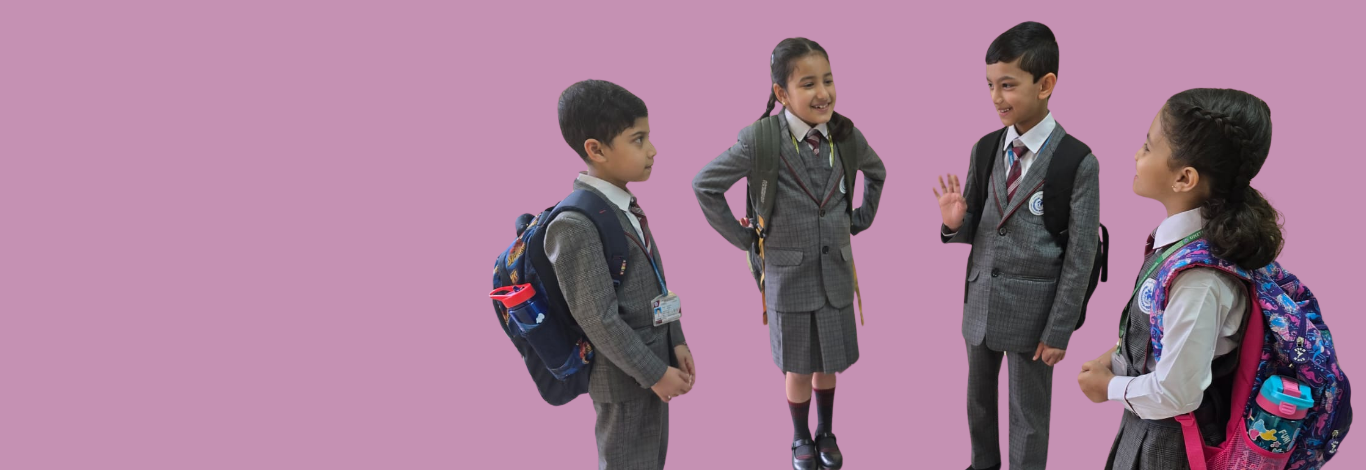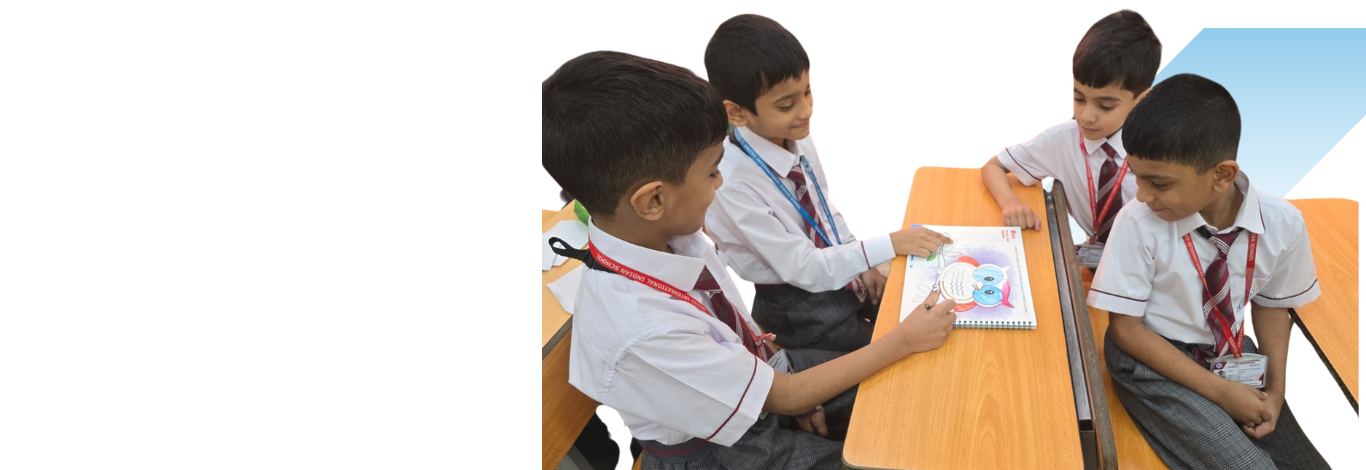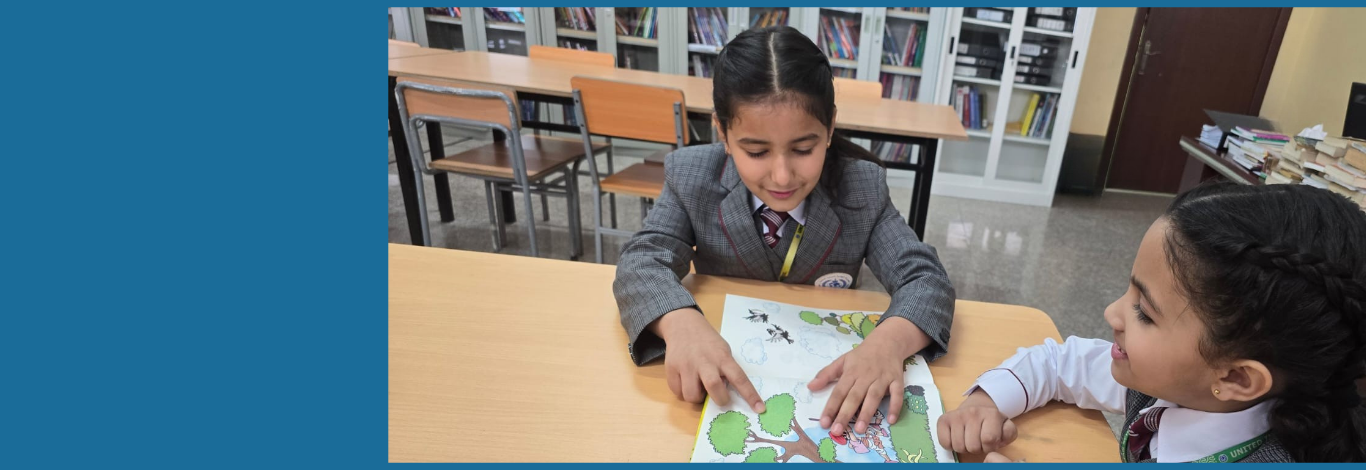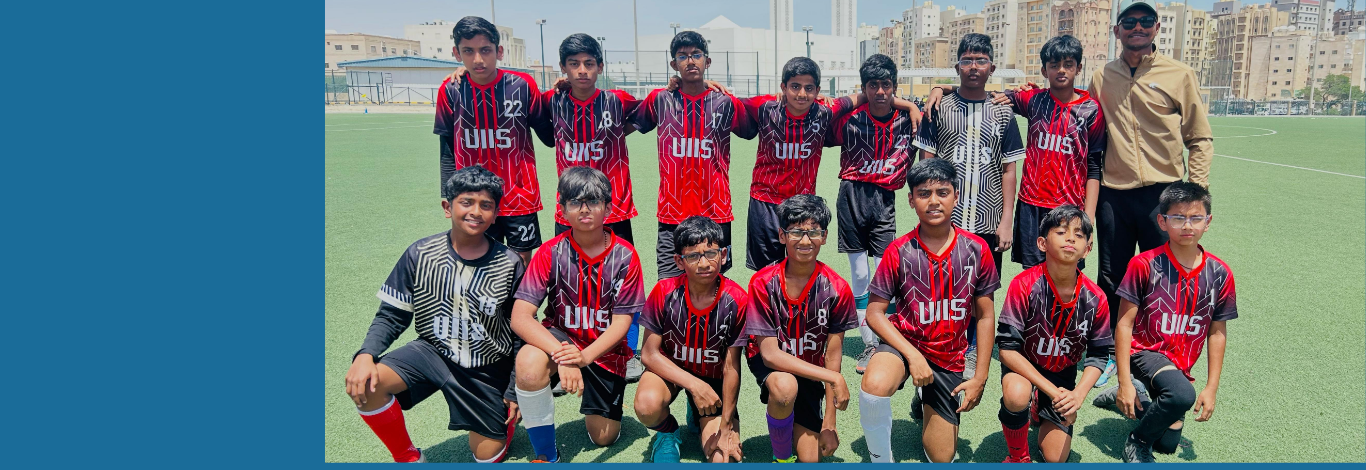SCHOOL CURRICULUM POLICY
Academics
At United International Indian School, Education for Life, Excellence in Education and Commitment to a meaningful Education are of prime importance. Quality education is provided to each and every child. UIIS believes that love for education should be developed for children in the initial years and conditions should be created for them to pursue a positive approach in life.
A unidirectional teaching method is being increasingly substituted by a multidirectional group workshop method.
Here the teacher becomes the group co-ordinator initiating work, nurturing students without the phobia of examinations and homework. Emphasis is on development of oral and written expression. Home assignments are not a carry-over of classwork but oriented towards honing individual talents.
Accreditation
United International Indian School, Kuwait is affiliated with the Central Board of Secondary Education (CBSE), which is the largest educational board in the country and is duly recognized by the Department of Education, Government of NCT Delhi.
Curriculum – KINDERGARTEN
Learning at this stage is experiential, fun & activity based. The pedagogical processes followed are based on developmentally appropriate methods with multiple teaching and learning strategies. The child is the central figure and an active participant in the teaching learning process. Children enjoy the freedom to explore, express, create and interact within their environment and gain knowledge.
Children at this stage:
• identify self by specific abilities, characteristics and preferences (e.g., by gender, age, as part of a family, friends, colours, food etc.)
• develop a sense of balance and physical coordination through play.
• learn language through activities like role play, storytelling, poetry recitation, singing and reading age appropriate and level based books.
• understand to analyse their actions as right or wrong.
• learn to be friends with children from diverse backgrounds, celebrate various festivals, sing and dance together.
• learn to live in harmony with their environment, make observations, enquire and ask questions - what, how & why.
• relate a numeral to its respective quantity, associate value to a number and Identify shapes by names: curved and straight lines, circle, square, triangle and understand spatial relationships.
• learn to manage their feelings and emotions and learn appropriate behaviour.
• demonstrate the ability to begin to assume responsibility for their own safety within their environment.
• learn values, life skills, build relationships and grow up as confident and responsible citizens.
At this stage, there is no system of formal assessment.
Curriculum – Primary Level
The primary school curriculum is based on the NCERT guidelines and focuses on laying the foundations of knowledge, skills and attitudes which will guide the young learners for life.
The KEY LEARNING DOMAINS which are focused are:
Language and Literacy (Listening, Reading, Writing & Communication skills)
• Numeracy (Mathematical thinking and reasoning)
• Personal, Social & Emotional Development (Self Awareness & Social Awareness)
• Discovery of the World - (Environmental awareness)
• Motor Skills development (Physical & Health Education)
• Aesthetics & Creative Expression (Art Education)
PRIMARY CLASSES I TO IV
At this stage too, the curriculum supports experiential learning, focuses on conceptual clarity by relating learning to everyday life, developing thinking and analytical skills. The curriculum also aims at nurturing the affective domain of the learners through subjects and activities which will help develop the basic life skills in the learner - self-awareness, effective communication skills and emotional strength. The pedagogy at this stage is not absolutely fixed, structured or prescribed but it is multi-dimensional and flexible, which gives the learner ample opportunities to explore and discover.
The learning areas include:
1. Languages (English, Hindi/French & Arabic) - Acquire the skills of listening, speaking, reading & writing, acquire varied range of vocabulary, develop interpersonal communication skills and express meaningfully. These languages activities with an aim to initiate the language in a fun way. However, a more structured syllabus, is followed in the upper primary stage.
2. Mathematics - Performing operation of numbers understanding shapes, similarities and differences, collecting data, representing and analysing the data identifying patterns in shapes and numbers etc.
3. Environmental Science - To make them aware of the of surroundings, appreciative of and sensitive of environmental issues (natural, physical, social and cultural).
4. Computer Applications (from Grade II)
5. Visual Arts & Performing Arts
6. Physical & Health Education
7. Life skills & Value Education
Children participate in intra-section and inter-section competitions, class assemblies, annual days, Sports day various celebrations and social awareness campaigns.
Subjects Taught in various Classes
| SUBJECTS | CLASSES VI - VIII | CLASSES IX - X |
|---|---|---|
| Language 1 | English | English |
| Language 2 | Hindi/ French | Hindi/ French |
| Language 3 | Arabic | Arabic |
| Elective 1 | Mathematics | Mathematics |
| Elective 2 | Science | Science |
| Elective 3 | Social Science | Social Science |
| Computer Applications | Computer Applications | |
| Work Experience | Work Experience | |
| Physical and Health Education | Physical and Health Education | |
| Sports | Sports | |
| Art Education | Art Education |
| SCIENCE STREAM | COMMERCE STREAM | |||
|---|---|---|---|---|
| BIO MATH | MATH COMPUTER | BIO INFO | COMMERCE INFO | COMMERCE MATH |
| English | English | English | English | English |
| Mathematics | Mathematics | Physics | Economics | Mathematics |
| Physics | Physics | Chemistry | Accounts | Economics |
| Chemistry | Chemistry | Biology | Business studies | Accounts |
| Biology | Computer Science | Informatics Practices | Informatics Practices | Business studies |
| Typography And Computer applications | Typography And Computer applications | Typography And Computer applications | Typography And Computer applications | Typography And Computer applications |

